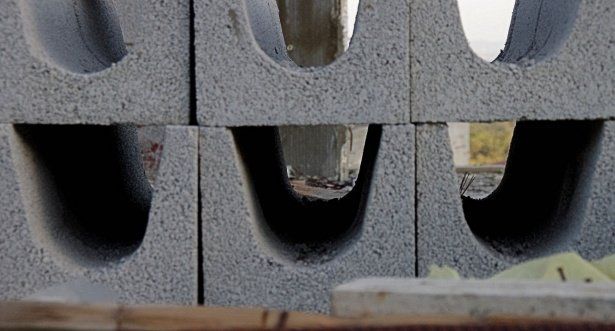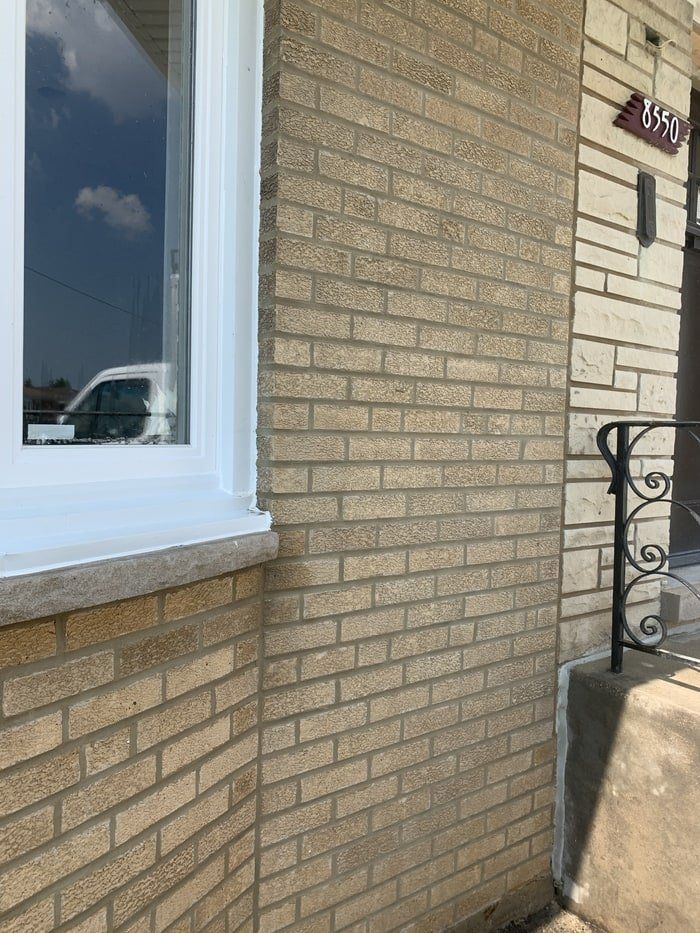Can you build a cinder block wall without using any mortar?
When constructing a building or wall, there are certain materials that are necessary to make it possible. One of the most important materials in building a wall is the mortar, which is mainly used to help level the blocks and is also used the same way as regular glue, which is utilized to bind and put together other materials such as concrete, brick, and stone. There are different types of mortar colors and mixes available in the market and contractors can also make their own mix depending on what they will use it for.
A mortar first appears as a paste that will eventually harden as time passes. Its main use as said earlier, is to hold together masonry units to make them stable and last for a long time.
Because the mortar is so functional and its use is very important in construction, homeowners may ask if they can build walls without mortar. The simple answer to this is yes. The process of building walls without the use of mortar is also called “surface bonding.” This can be done with concrete and cinder blocks and is commonly used in places where the masonry is expected to be often exposed in places with high levels of moisture, as the surface bonding makes the masonry more resistant to water.
When building a cinder block wall, surface bonding is possible for this particular masonry unit, and is a very efficient (and economical) way to do the procedure.
What is a cinder block wall and can you have one built without using any mortar?
Cinder blocks are one of the most used and popular concrete masonry units or CMU as they are significantly cheaper in price and are fairly accessible. However, they are weaker and lighter when compared to a concrete block, as it is made with a mixture of coal cinders, cement, and concrete.
In appearance, cinder blocks are similar to a concrete one as they are also made using the same rectangular shape, however, they are hollow in the middle, while concrete blocks are usually packed full of cement and other aggregates.
As mentioned above, it is definitely possible to construct a cinder block wall without using mortar. This would be possible by using the most common method known as surface bonding. This particular technique was introduced first before the year of 1970s as a way to make it possible for more people to build houses that are much lower in cost.
When a cinder block wall is surface bonded, this will be done by dry-stacking the CMUs or concrete masonry unit. In this case, the cinder blocks will be stacked on top of each other until the desired height is reached, and then a specific surface bonding cement will be applied on each side. This will make them stick together, just like what mortar does.
What are the benefits of using the surface bonding procedure?
Surface bonding offers so many benefits to construction, which is why it is popularly used in many places all over the world.
Here are the advantages in using surface bonding for your cinder block:
1.Surface bonding makes your wall more resistant to water.
When your cinder block wall is bonded on its surface, it can make your wall less prone to absorb water. As we all know, no matter how strong your masonry unit is, they all share the same enemy, and that is water. When a unit is often exposed to moisture, this will eventually cause your wall to grow weak and to spall, which can be highly expensive to repair. If a wall is constructed properly using the right materials, it will make it less susceptible to water damage, which is very crucial, especially for basement walls.
2. Surface bonding makes your walls fireproof.
When a wall is bonded on its surface, it can be more beneficial in some ways compared to mortar. Surface bonded walls are more tightly packed to each other, which can make your cinder block wall more resistant to fires and will minimize it from spreading to other areas, making your home or building safer and more secure to live and work in.
3. Surface bonding makes your walls energy efficient.
Cinder blocks are known to be energy efficient, and when they are bonded properly, this would mean that the wall is more effective to conserve energy as they are tightly sealed. When winter comes, it will be easier to stay warm and it will also be a lot cooler during summer, which can make a huge difference in making your building more comfortable to stay in.
4. Surface bonding makes the construction of the wall faster to finish.
Using mortar can be time consuming, as they will need to be mixed thoroughly and properly, especially when there is a specific mix to be used that will not be factory bought. When mortar is used, there are advanced skills that are necessary to make sure that it will be placed correctly and that it is leveled in a balanced manner. Compared to using mortar, surface bonding will be faster to complete, making the work more efficient.
5. Surface bonding makes your walls last longer.
Like using mortar, surface bonding makes your cinder wall more durable as it makes the material stick together. Although mortar and bonding cements are two entirely different materials, they are highly capable of making a wall last longer and makes the need to have them repaired and maintained lesser. Surface bonding a cinder block wall also increases the tensile and tension strength of the constructed wall.
6. Surface bonding makes your walls look more attractive.
When a cinder block wall is surfaced bonded, this does not mean that it will stay the same boring gray color forever. Cinder block walls can be colored with different shades of pigment to make them more attractive and to make them fit your building’s current theme.
7. Surface bonding is economical.
Because surface bonding is faster to complete and does not need high levels of skills to place when compared to using mortar, the labor costs will be minimized, which is why it is a highly economical procedure that will not break the bank as much. As mentioned above, surface bonding is usually done in places where function and price are prioritized, such as in low-cost housing and other similar projects.
How much does it cost?
There are several factors that will affect the particular cost of surface bonding, which is why it would be better to consult your trusted contractor for a price quotation. Some of these factors are your area, your desired wall height, the material that will be used, the timeframe of the project, the contractor’s labor fees, and many more.
If you do not have a contractor yet, do not immediately get one without knowing more about their services. Make sure that you ask around for the reliable workers and that you have read the reviews on their website before getting their services. This can save you from headaches later on.
Can you surface bond a wall on your own?
When compared to constructing a cinder block wall using mortar, surface bonding is easier, but it is not recommended to DIY a cinder wall for your safety and for the overall security of your building. The construction or building of walls should never be taken lightly and should always be done by an expert.



